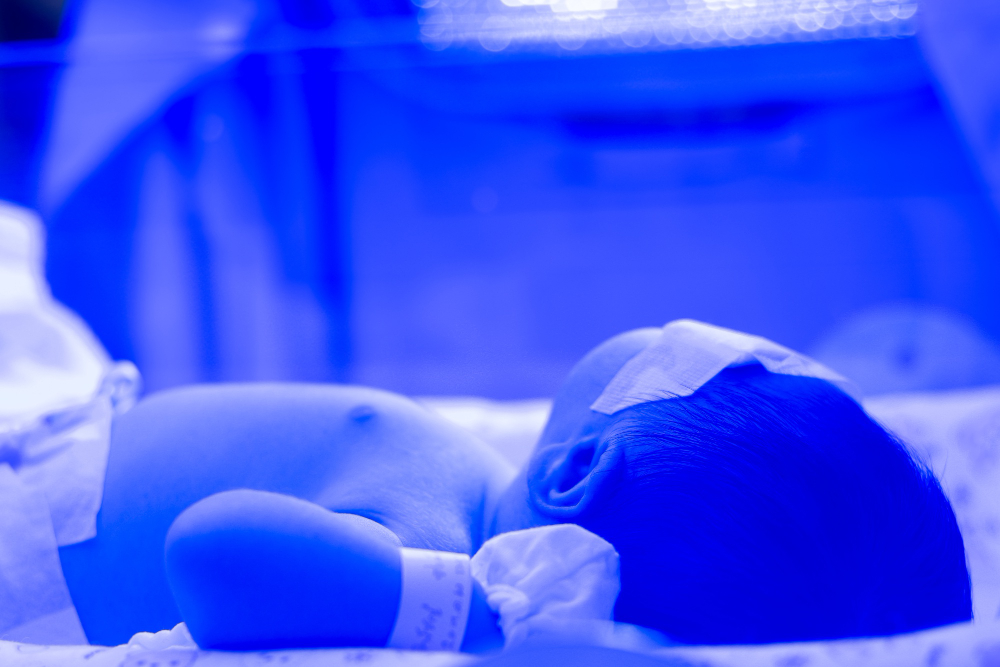Family, Children & Elderly
Neonatal Jaundice
By H.S. (staff writer) , published on August 26, 2021

Medicine Telehealth Health
Neonatal jaundice, also called newborn jaundice, usually occurs within two weeks after birth. Neonatal jaundice affects 60% to more than 90% of infants worldwide. Mostly, babies with neonatal jaundice do not need any treatment, but if jaundice does not go away after two weeks of age, treatment in the hospital becomes necessary.
Read on to find more about neonatal jaundice, its causes, and its symptoms.
What Is Neonatal Jaundice?
Discoloration of the skin is common in newborns, but the yellow discoloration in the baby's skin, palms, and whites of eyes is called neonatal jaundice, which, in most cases, is harmful. Neonatal jaundice often occurs when the baby's liver has not matured enough to remove bilirubin [1].
Bilirubin is a yellow-colored pigment produced during the normal breakdown of red blood cells.
When bilirubin is not removed, abnormally high amounts of bilirubin start building up in the baby's blood, causing jaundice. If left untreated, severe jaundice may lead to brain damage and deafness.
What Are The Causes Of Neonatal Jaundice?
The babies born before 35 weeks of pregnancy (premature babies) are more likely to develop neonatal jaundice [2]. The babies who have difficulty feeding their mother's milk are also at higher risks.
Causes of neonatal jaundice include:
- An abnormal amount of RBCs in a baby's blood.
- Infection, like sepsis
- Immature liver
- Internal bleeding
- Bruising at birth
- Mismatches in blood types
- Lack of certain enzymes [3].
How To Know If Your Baby Has Jaundice?
The following are some common symptoms that may indicate neonatal jaundice:
- The first and common symptom is yellowing of the skin and eyes, which appear after three to four days of the child's birth. This yellow discoloration then starts spreading to the hands and legs.
- If a baby's nose or forehead is gently pressed and becomes pale, it is a clear sign that your baby has jaundice.
- Some other common symptoms include excessive sleeping, poor or unusual feeding ability, black or dark-colored urine, and black poop.
How Is Neonatal Jaundice Diagnosed?
According to the American Academy of Pediatrics (AAP), a doctor must check for jaundice in newborns after 72 hours of delivery. A doctor can diagnose neonatal jaundice by:
- Visual Examination: Visual examination involves looking for symptoms of jaundice on the baby's body.
- Blood Test: The test is performed to measure bilirubin levels. A blood sample is taken from the baby's heel so that the amount of bilirubin in the serum can be checked.
- Skin Test: This test is used to measure bilirubin levels by placing a device called a bilirubinometer on the baby's forehead. The device shines a special light on the skin and measures bilirubin levels.
Treatment For Neonatal Jaundice:
If jaundice does not disappear within one to two weeks, the doctor will go for the treatment.
- Phototherapy: Light treatment is the first treatment for neonatal jaundice. In this procedure, the insoluble trans bilirubin is converted into soluble cis –bilirubin. The doctor will place the baby (only wearing a diaper) under the blue spectrum light. A fiber-optic blanket is also used for phototherapy [4].
- Exchange Transfusion: In severe cases of neonatal jaundice, blood transfusion is necessary. The baby receives blood from the donor. The donor blood will keep the baby's RBCs healthy and undamaged, keeping the bilirubin in average amounts [5].
References:
-
Mitra S, Rennie J. Neonatal jaundice: aetiology, diagnosis and treatment. Br J Hosp Med 2017;78:699–704. https://doi.org/10.12968/hmed.2017.78.12.699.
-
Ives NK. Neonatal jaundice. Curr Paediatr 1997;7:67–72. https://doi.org/https://doi.org/10.1016/S0957-5839(97)80183-2.
-
Friedman L, Lewis PJ, Clifton P, Bulpitt CJ. Factors influencing the incidence of neonatal jaundice. Br Med J 1978;1:1235 LP – 1237. https://doi.org/10.1136/bmj.1.6122.1235.
-
Maisels MJ, McDonagh AF. Phototherapy for Neonatal Jaundice. N Engl J Med 2008;358:920–8. https://doi.org/10.1056/NEJMct0708376.
-
Murki S, Kumar P. Blood Exchange Transfusion for Infants with Severe Neonatal Hyperbilirubinemia. Semin Perinatol 2011;35:175–84. https://doi.org/https://doi.org/10.1053/j.semperi.2011.02.013.
Find articles related to: Medicine Telehealth Health
More articles about Family, Children & Elderly
Back to the Health Tips Index




